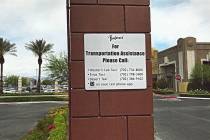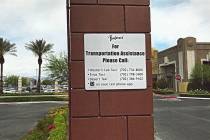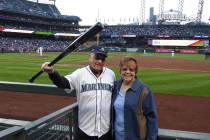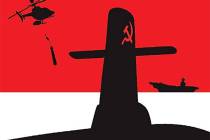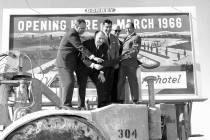Father honors veterans where they fought and died
When I last saw my father, a week ago, we were in Manila. He was heading to Corregidor Island, and I was heading home to Las Vegas.
It’s embarrassing to admit, especially on Veterans Day, but Corregidor was the name of a place I had heard of, but didn’t pronounce or even spell correctly. I really didn’t know much about it.
For my father, Corregidor represents much more. He was 12 when the siege of Corregidor was front page news when World War II began in 1941. A young boy whose own father was an officer in the U.S. Navy, he was following the war through the newspapers.
The U.S. Army Corps of Engineers had built the Malinta Tunnel on the island between 1922 and 1932. One long tunnel and 24 lateral tunnels, it was designed to offer protection from any military attack and defend Manila Bay from aggressors. It was planned to house a 1,000-bed hospital and store military supplies and food.
Early in World War II, when the Japanese invaded the Philippines, Philippine President Manuel Quezon and Gen. Douglas MacArthur set up their headquarters in Malinta Tunnel on the island, trying to fend off the Japanese by keeping them from taking Corregidor.
Corregidor was important because, as long the Filipino and American troops held it, the Japanese couldn’t use Manila Bay for their war effort in the Pacific Theater. The siege lasted five months before the American and Filipino troops surrendered in May 1942.
MacArthur had been ordered to leave earlier and went to Australia, where he gave his famous “I shall return” speech, referring to Corregidor.
Corregidor was retaken by Filipino and American troops in 1945, but in 1942 it was the last Filipino-American bastion to be seized by the Japanese. Bataan had fallen the month before.
My father emailed me describing how the barracks, officers’ quarters, family homes, parade grounds and a movie theater, which were all heavily damaged or destroyed, had been left in ruins. “Seeing and walking through the Malinta Tunnel (836 feet long) brought back all the memories I had as a young lad at 12. During the siege the newspapers would always show the tunnel entrance.”
For my father, Corregidor was one of the major stops of his cruise through the Pacific (a cruise he’s still on). Holland-America designed the Amsterdam’s route to visit many of the major sites of importance during World War II, including Pearl Harbor, Guam, Saipan, Corregidor and Guadalcanal.
Today, when we honor veterans, my father is scheduled to be in Rabaul in Papua New Guinea, visiting a war museum and a cemetery for Allied troops. People commemorate Veterans Day in their own way, but he will have the privilege of being at a site where Allied troops who never made it home are buried. I’m sure it will be moving and thought-provoking.
This 72-day cruise attracted many veterans because of the focus on World War II. Some refused to get off at the stop in Nha Trang in Vietnam, unwilling to see it as a tourist location, unwilling to spend their vacation dollars in a country where Americans lost their lives as well as the war. Others were eager to see Vietnam, either for the first time or as a return trip reeking of personal memories. It was a port where it was understandable that people felt passionately, whether pro or con.
For some, this cruise was about eating and shopping.
I’m proud to say, for my father, it was about military history and recalling what it means to believe in “duty, honor, country,” just like so many others remembered today in ceremonies and at cemeteries all over the world.
Jane Ann Morrison’s column appears Monday, Thursday and Saturday. Email her at Jane@reviewjournal.com or call 702-383-0275.









